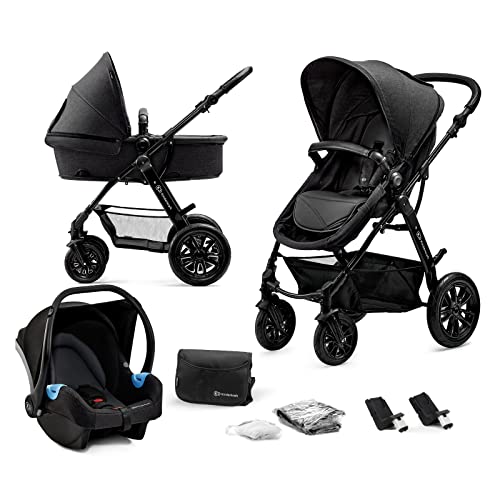What Is Pram And Pushchair' History? History Of Pram And Pushchair

Prams and Pushchairs: A Comprehensive Guide for New Parents
Browsing being a parent involves a plethora of choices, among the most substantial being the option of an ideal pram or pushchair. These necessary products work as a haven for babies and a way of transport for caretakers. Whether walking through the park or running errands, a great pram or pushchair can enhance the experience for both moms and dad and kid. This post supplies an extensive look at the types of prams and pushchairs readily available, their features, and essential considerations to make before acquiring one.
Comprehending Prams and Pushchairs
While the terms "pram" and "pushchair" are often used interchangeably, they describe a little various products. Comprehending the difference can help in making an educated option.
| Term | Description |
|---|---|
| Pram | Typically created for babies, prams have a totally flat structure, allowing the baby to rest easily. They frequently include a carrycot and are ideal for newborns approximately about six months old. |
| Pushchair | Designed for older babies and toddlers, pushchairs frequently have a more upright seating position. They are versatile and can typically be reclined or adjusted to deal with the child's growth, beginning with around 6 months and extending to preschool age. |
Types of Prams and Pushchairs
When picking a pram or pushchair, various styles will deal with various parenting requirements and way of lives. Here are the main types readily available on the marketplace:
Traditional Prams
- Traditional, classic designs with a sturdy carrycot.
- Suitable for newborns.
- Typically bulkier, ideal for leisurely strolls.
Pushchairs
- Lightweight and often foldable, ideal for travel and quick trips.
- Can be front-facing or rear-facing.
- Include functions like adjustable handlebars and reclining seats.
Travel Systems
- A combination of a safety seat and a pushchair.
- Practical for car-to-pushchair transitions without disturbing the baby.
- Generally more costly however worth considering for their multifunctionality.
Multi-Functional Strollers
- Deal numerous configurations, permitting a carrycot, sit-up seat, or safety seat accessory.
- Adaptable based on the child's growth and changing requirements.
- Can frequently be utilized for several children with accessories.
Light-weight Strollers
- Ultra-portable, ideal for moms and dads on the go.
- Easy to fold and carry.
- Usually advised for older babies or toddlers.
Key Features to Consider
When picking the best pram or pushchair, a few critical functions should be considered:
Safety Features
- Try to find a five-point harness system to secure the child.
- Models with braking systems that are easy to operate with the foot offer added security.
Weight and Size
- Think about just how much weight the caregiver can manage, and the storage area readily available.
- A lightweight model may supply simpler maneuverability, while a bulkier model may offer better stability and resilience.
Toughness and Material
- A frame made from top quality products ensures longevity.
- Weather-resistant materials can provide comfort and ease of cleaning.
Ease of Folding
- Designs that can be folded quickly and quickly are generally preferred, particularly for parents who need to use public transport or have actually restricted storage area.
Handling and Comfort
- Adjustable handles can accommodate different heights, ensuring a comfortable push for all caretakers.
- Good suspension is important for smoother trips on uneven surface areas.
Getting ready for the Purchase
Before buying, it's a good idea to perform comprehensive research study. The following actions will help new moms and dads make a notified choice:
Define Your Needs
- Consider way of life aspects such as travel frequency, urban vs. suburban living, and storage area.
Budgeting
- Prams and pushchairs differ significantly in rate. Set an affordable budget plan, bearing in mind security and quality.
Test Drive
- Whenever possible, evaluate the pram or pushchair. Take note of weight, maneuverability, and total convenience.
Parent and Baby Reviews
- Try to find feedback from other parents who have utilized the item. This can offer insights into real-world performance.
Inspect for Warranty
- A good warranty can secure your investment and make sure durability.
FAQs
Q1: At what age can a baby use a pushchair?Typically, babies can
start utilizing a pushchair around 6 months when they can hold their head up individually. Prior to that, a pram or carrycot is recommended. here. : Are travel systems worth the investment?Yes, travel systems can use excellent worth for moms and dads who require a smooth transition between the
car and stroller. They supply convenience and versatility, especially for households who often travel. Q3: How long can you utilize a pushchair?Most pushchairs can be utilized up until a kid is around 3 to 4 years of ages, though some models use functions for larger kids. Q4: Do I require a new pram or pushchair for each child?If your existing design is in great condition and meets safety standards, there may be no requirement for a new one. However, think about factors like wear and tear, hygiene, and developing requirements. Selecting the right pram or pushchair is a key decision for any brand-new moms and dad. With a variety of designs, types, and features offered, parents can discover a design that suits their requirements, lifestyle, and budget.
By looking into and understanding the differences between prams and pushchairs, parents can make a confident and informed choice that will offer the safest, most hassle-free experience for their child. As they embark on this exciting journey of parenthood, having the ideal transportation option can genuinely boost the adventure of raising a child.

